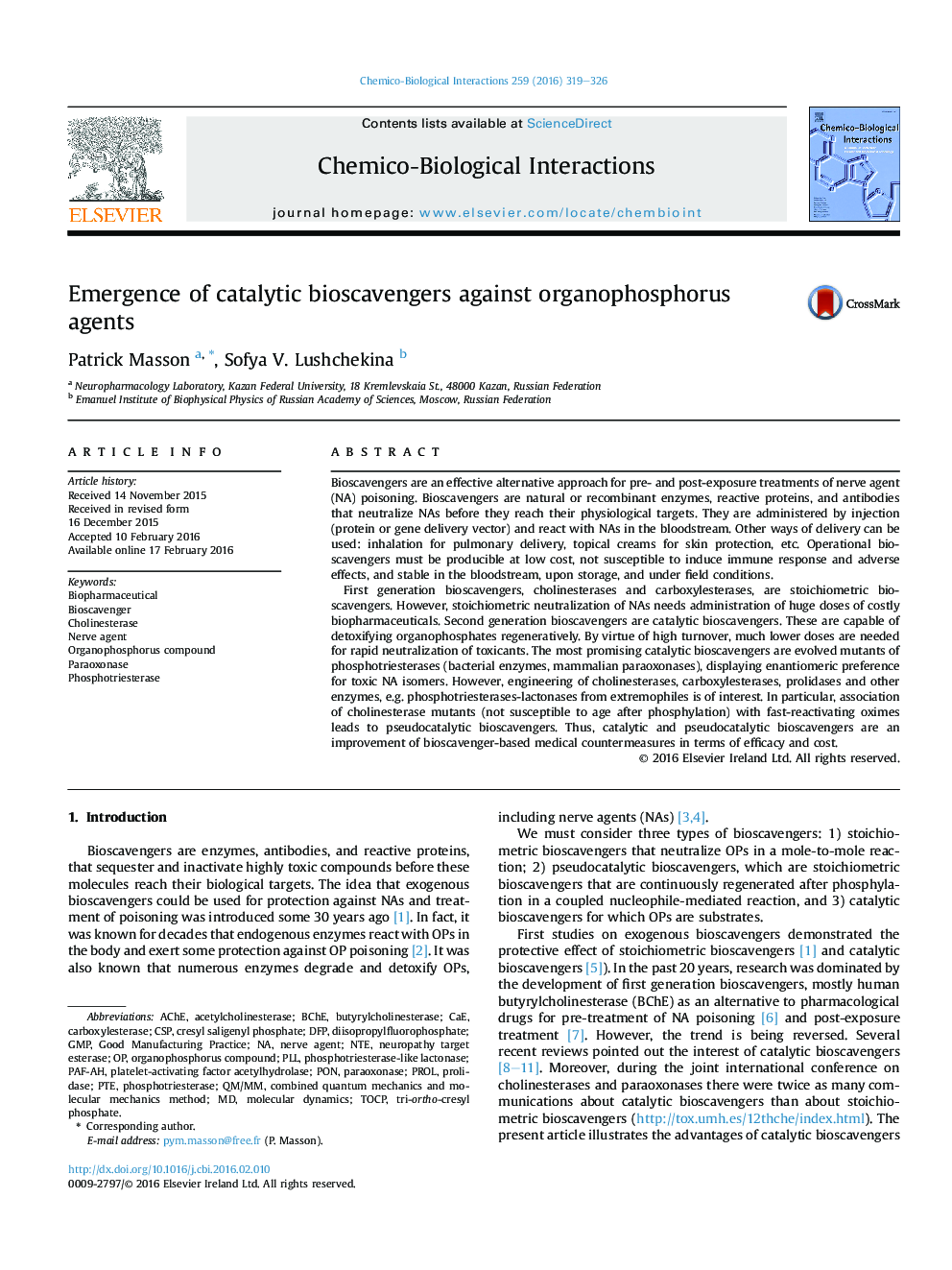| کد مقاله | کد نشریه | سال انتشار | مقاله انگلیسی | نسخه تمام متن |
|---|---|---|---|---|
| 5559541 | 1403288 | 2016 | 8 صفحه PDF | دانلود رایگان |
- Bioscavengers neutralize organophosphates before they reach physiological targets.
- Catalytic bioscavengers are effective for pre- and post- exposure treatments.
- The most promising catalytic bioscavengers are evolved phosphotriesterases.
Bioscavengers are an effective alternative approach for pre- and post-exposure treatments of nerve agent (NA) poisoning. Bioscavengers are natural or recombinant enzymes, reactive proteins, and antibodies that neutralize NAs before they reach their physiological targets. They are administered by injection (protein or gene delivery vector) and react with NAs in the bloodstream. Other ways of delivery can be used: inhalation for pulmonary delivery, topical creams for skin protection, etc. Operational bioscavengers must be producible at low cost, not susceptible to induce immune response and adverse effects, and stable in the bloodstream, upon storage, and under field conditions.First generation bioscavengers, cholinesterases and carboxylesterases, are stoichiometric bioscavengers. However, stoichiometric neutralization of NAs needs administration of huge doses of costly biopharmaceuticals. Second generation bioscavengers are catalytic bioscavengers. These are capable of detoxifying organophosphates regeneratively. By virtue of high turnover, much lower doses are needed for rapid neutralization of toxicants. The most promising catalytic bioscavengers are evolved mutants of phosphotriesterases (bacterial enzymes, mammalian paraoxonases), displaying enantiomeric preference for toxic NA isomers. However, engineering of cholinesterases, carboxylesterases, prolidases and other enzymes, e.g. phosphotriesterases-lactonases from extremophiles is of interest. In particular, association of cholinesterase mutants (not susceptible to age after phosphylation) with fast-reactivating oximes leads to pseudocatalytic bioscavengers. Thus, catalytic and pseudocatalytic bioscavengers are an improvement of bioscavenger-based medical countermeasures in terms of efficacy and cost.
Journal: Chemico-Biological Interactions - Volume 259, Part B, 25 November 2016, Pages 319-326
